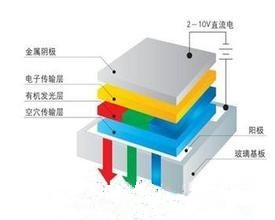For Samsung’s strategy, many people questioned that QLED, the quantum dot TV that is currently on the market, is just a technological upgrade in the LCD field and cannot be compared with OLED. There is also a voice questioning why Samsung chose QLED because it is an expedient measure after the large-screen OLED technology is unable to catch up with LG. It uses technical countermeasures to diversify the OLED market, and has limited promotion of technological progress. I believe that this interpretation may be one-sided, in fact, Samsung as the next generation of display technology, QLED is a new display technology that combines the advantages of traditional LCD and OLED. It is expected that QLED TV products will be available after 2019.
As we all know, the quantum dot used in QLED is a semiconductor nanocrystal. When stimulated by light or electricity, the quantum dot emits colored light. The color of the light is determined by the material and size of the quantum dot, so it can be changed. The quantum dot form has a high peak-solid color including red light to blue light, and has congenital absolute advantages in color. The two major application directions of quantum dots in display technology are often confused:
One is Quantum Dots-Backlight Unit (QD-BLU), which is based on the quantum dot photoluminescence (QD-BLU) technology. Currently, QD-BLU is a solution that is used in the market to solve the problem of insufficient backlight for ordinary LCD TVs. The bright white problem, this color deviation is reflected in the screen image, the user will feel the picture is cold or warm, not reach the best visual experience. Using blue LEDs to obtain high-purity white light through optical materials (QDEF diaphragms) with red and green quantum dots, the problem is well solved, and at the same time a very brilliant color is reproduced, which belongs to the field of quantum dot technology used in the LCD field. Compromise solution.
The QLEDs currently being developed by Samsung are the second type of QDs: Quantum Dots Light Emitting Diode Display (QLED) based on electroluminescent properties, which belongs to the field of quantum dots in display technology. More advanced applications. It is no longer that blue light produces white light through a layer of quantum dot material to illuminate the LCD screen, but instead, it is electrically driven so that the quantum dot itself emits light and produces an image by color mixing, eliminating the need for liquid crystal, color film, and the need for a backlight unit. This makes the QLED and OLED have similar principles in the display mode.

1. Because OLEDs use organic materials, the life span of three luminescent materials is a life-threatening and fatal injury. The quantum dot crystals are non-organic, so the working state is more stable, the lifetime is longer, and the cost is lower.
2. Because the process is complicated and the production yield is too low, it has always been a problem that large-screen OLEDs are difficult to overcome. The QLED process flow is relatively simple and has inherent advantages in large-scale mass production.
3. QLED color performance is more perfect, color gamut can easily reach the most stringent color standard BT2020 more than 90%, while OLED TV color gamut is far beyond the traditional LCD TV, but under the BT2020 standard, about 70%.
4. Under the same picture quality, the energy saving of QLED is expected to reach twice the OLED screen.
Cost, production, color, energy consumption, the four major differences between QLED and OLED. From this comparison point of view, QLED does not seem to be more than "a little" than OLED. Compared to LG's difficulty in large-screen OLEDs, the status quo is not a good one. Samsung's seemingly bold decision on QLEDs and careful thoughts may be a good move.
Of course, QLEDs are still in the technological R&D stage, and they must have some difficult problems to overcome. It is expected that QLEDs will be available only three years later. During this period, whether OLED technology will leapfrog development to overcome its own defects, QLED technology will encounter bottlenecks in the development and fetal death, really difficult to predict. However, as consumers gradually return to the nature of television and pursue image quality, whoever is next-generation display technology may not be so important. It is the core of competition to provide the best display in a cost-effective manner. The technical dispute between QLED and OLED, both of which have their own advantages, left us with a lot of imagination about the future display. This is the most exciting part.
Budget Laptop For Students is a great gift parents like to prepare for their children. There are too many choices on the market, so how to choose a right one for your children? 10.1 inch Low Budget Laptop For Students is design for kids, like below 10 years; 14.1 inch n4020 64gb Budget Friendly Laptops For Students is the most competitive and hot one for student project; 15.6 inch n5095 128gb Budget Friendly Laptops For Students is the best one for middle or high school student or teacher online teaching; Of course, also have High Quality Cheap Laptops with i3, i5, i7 10th or 11th; 15.6 inch or 16.1 inch i7 Affordable Laptop With Good Specs and dedicated graphics. Other 11.6inch celeron budget friendly laptops in 2 in 1 or yoga type also available.
Therefore, you can share your recent and powerful hardware interest, then we can recommend the right one for you. Of course, can customize as your special requirements.
In fact, the most easiest way is what you share the details, like size, cpu, ram, rom, pcs, oem service, screen, camera, etc.
Budget Laptop For Students,Low Budget Laptop For Students,Budget Friendly Laptops For Students,Affordable Laptop With Good Specs,High Quality Cheap Laptops,Budget Friendly Laptops
Henan Shuyi Electronics Co., Ltd. , https://www.shuyipc.com